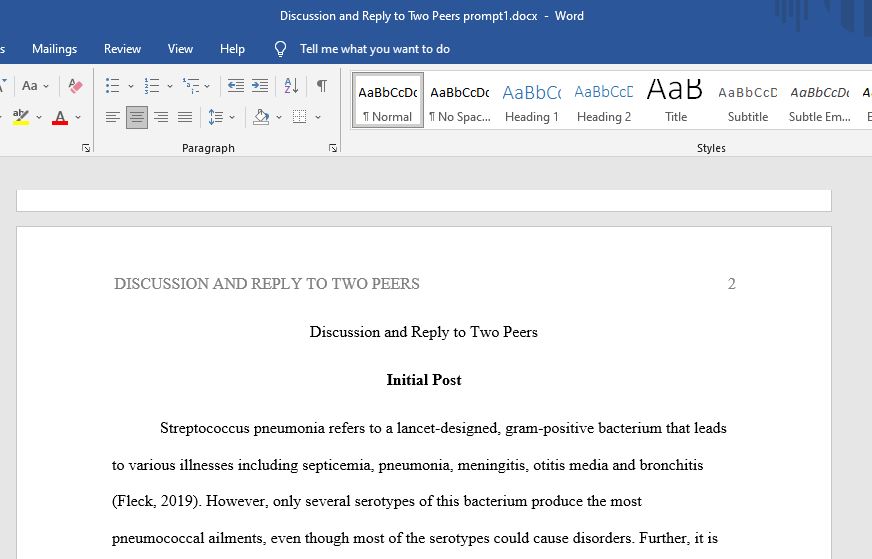Choose any one of the bacterial pathogens and discuss its appearance, staining reaction, culture characteristics, disease caused and mechanism of disease.
Choose any one of the bacterial pathogens and discuss its appearance, staining reaction, culture characteristics, disease caused and mechanism of disease.
Bacterial Pathogens
Choose any one of the bacterial pathogens and discuss its appearance, staining reaction, culture characteristics, disease caused and mechanism of disease.
When responding to your classmates be sure to note similarities and differences between the bacterial pathogens both of you chose. How do these influence virulence?
Reply to peer:
Unit 6- Legionella
Reply 1
Legionella bacteria is rod shaped, gram negative and aerobic. It is found naturally in freshwater environments but can also grow in man made water structures (WHO, nd). These structures include water cooling systems, large plumbing systems, showerheads, and faucets. While not worrisome if ingested, legionella bacteria can infect the lungs if inhaled in small water droplets (CDC, 2021). Legionellae love stagnant water with protozoa growth since they love to feed on protozoa. They also require L-cysteine and iron salts which can be found in sediment to grow (WHO, nd). This bacteria causes legionellosis which is both pontiac fever (less severe illness) and legionella pneumonia or legionaire’s disease (severe respiratory infection). Since its favorite temperature is around 37 degrees Celsius it multiplies well in the human body WHO, nd). Symptoms of legionella pneumonia include shortness of breath, cough, fever, body aches, and headaches. 1 out of 10 people who contract legionnaire’s disease will die (CDC, 2021).
World Health Organization. (n.d.). Legionella. WHO. https://www.who.int/water_sanitation_health/dwq/admicrob4.pdf
CDC. (2021, March 25). Legionella (Legionnaires’ Disease and Pontiac Fever). CDC. https://www.cdc.gov/legionella/index.html
Reply 2
Listeria monocytogenes bacteria causes listeriosis infection, a food borne illness. Pregnant people, infants, 65+ and immune compromised people are the highest risk. Healthy adults can consume the contaminated food without much reaction to the bacteria. The bacteria is found in animal products. Because the listeria is a pyschrotrophic bacteria and can survive in low temps, when items such as sandwich meat or soft cheeses are refrigerated, it does not stop the growth of the bacteria. The pathogen is carried in the GI track and can cross over into the blood stream and cause more serve infections as listerial meningitis and miscarriages or stillbirths. The standard treatment is antibiotics, early diagnosis is critical (CDC, 2021). Listeria monocytogenes organisms are gram-positive, nonspore forming aerobic rods and they are coccoid shaped in smears (Pommerville,2017).
Centers for Disease Control and Prevention. (2021, September 10). Listeria (listeriosis). Centers for Disease Control and Prevention. Retrieved October 1, 2021, from https://www.cdc.gov/listeria/index.html.
Pommerville, J. (2017). Fundamentals of Microbiology (11th Edition). Jones & Bartlett Learning. https://purdueuniversityglobal.vitalsource.com/books/9781284146790
Requirements: see details
Answer preview:

word limit:278
